Road Medians
As one of the greatest publics works projects of the 20th century, highways present uniquely attractive locations to install renewable energy. They’re completely cleared of obstructions, and as they’re generally flat and straight, they get extensive sun and wind exposure. They’re often close to cities, almost always municipally owned, and easily accessible.
While roads themselves can also be extended to integrate solar power via overhead canopies, highways often feature medians – unpaved barriers between lanes of traffic (especially on city outskirts) – which are perfect locations to deploy renewable energy. Like the highway itself, medians are usually municipally owned as well. Yet they serve no functional purpose apart from separating directional traffic. Additionally, they require constant maintenance (mowing, landscaping, etc.), which comes with significant additional costs. So, why not repurpose them for solar panels and wind turbines, solving two problems at once? Japan, South Korea, China and The Netherlands have done exactly that:
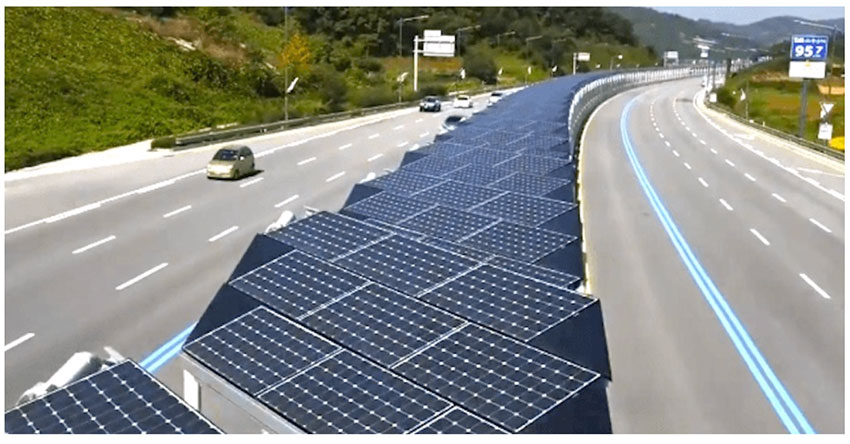
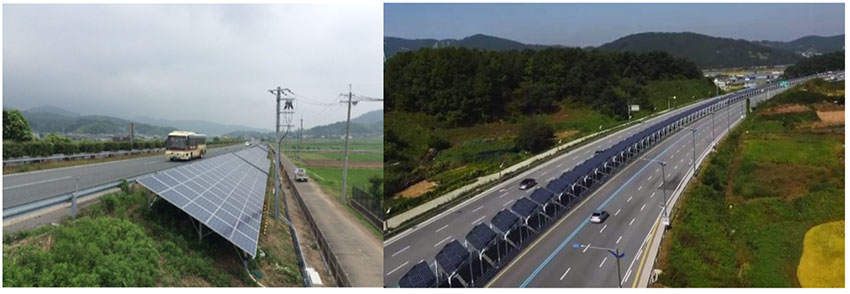
In the case of South Korea, their solar road median also doubles as a covered bike path for non-motorized commuters (image above).
This approach provides several benefits. First, sun exposure is completely maximized. Unless the sky itself is overcast, sunlight will reach these panels from the moment it rises until the moment it sets – and solar still works even when it’s cloudy.[24] Since highways span thousands of miles in aggregate, the surface area presented by employing medians is tremendous – surface area that’s within the ideal distance for maximum effectiveness of renewables. This approach is also easy. Highway medians are common and simple to access, yet serve little utility in their current form. Repurposing them as solar farms creates massive utility by using publicly-owned land – land that would otherwise cost billions at fair market value – to generate energy.
Further, there’s no reason why wind turbines couldn’t be installed above solar panels at regular intervals. They cast minimal shadow, present no risk to motorists, and can complement electricity generation twenty-four hours a day. The ideal height, size and shape of wind turbines (either horizontal or vertical axis, as shown by the images below) is debatable, but their utility is clear. And, when installed within medians, they also come with zero overhead land cost.
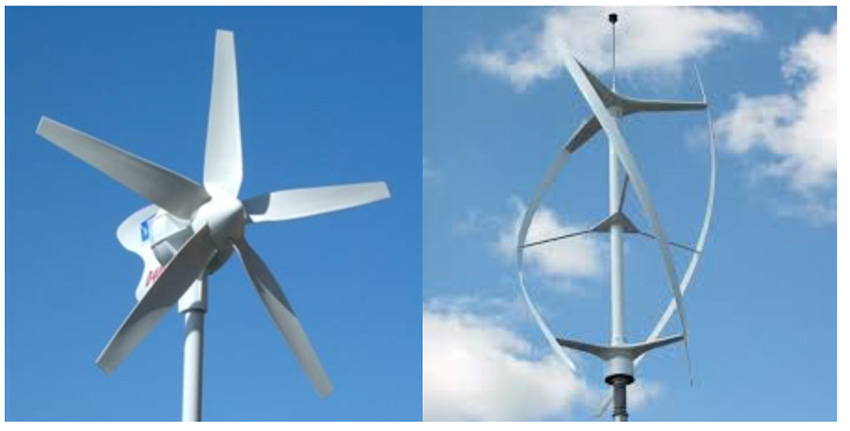
Installing renewables in highway medians could be a simple extension of municipal highway management. All a work crew would need to do to install, repair or replace a section of these panels or turbines is simply drive up to them and perform the required work – just as they would with any road maintenance today. Power lines could be run in modular conduit channels under solar panels and connect to municipal electric grids. The scale of implementation could be increased piecemeal, as funding allowed, to be extended indefinitely so long as there is available median surface.
Just as importantly, as this energy is generated by the municipality, it can be sold by the municipality – costing significantly less than if sold by a for-profit utility company. This further provides an extra revenue stream which cities can use to extend their service offerings or fund other initiatives outside of standard municipal budgets.
These side benefits, however, aren’t the central focus. A one mile-stretch of solar arrays (at ten feet wide) would comprise 52,800 square feet of surface, which at 30 kilowatt-hours generated per square foot annually would arrive at a combined total of 1.58 million kilowatt-hours – enough to power 150 homes. Any energy generated by wind turbines would be supplementary. There are approximately 4 million miles of public roads in the United States.[25] Yet while not all road surfaces boat medians (or proximity to power consuming locations), it does present attractive opportunities to install overhead solar canopies to generate energy – especially within cities.
Solar Road Canopies
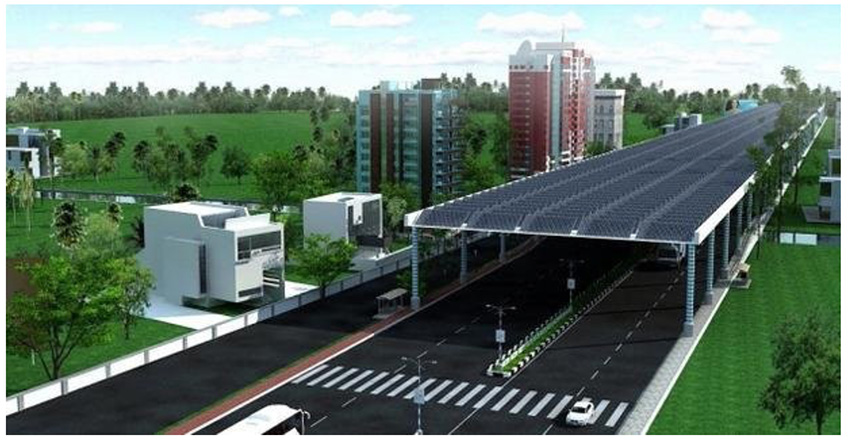
At concept, a solar road canopy is simply a rectangular canopy over a road surface that’s built on pylons. As roads are generally flat, straight and cleared at the sides from overhead obstructions, they’re another easy way to deploy millions of solar panels. The four million miles of American road surfaces – some 8.3 million lane-miles[26] – are among the most comprehensive in the world; they connect every city in the nation together and cover thousands of square miles – some 18,860 if we were to assume each lane of road had the national average width of 12 feet.[27]
Extrapolated into square feet, that’s a cool 525.89 billion. At 30 kilowatt-hours per square foot, per year, even one-tenth of that area would output 1.58 trillion kilowatt-hours – roughly half our national energy consumption. Further, roads also remain municipally owned, which like highway medians and public infrastructure allows for large-scale deployment while avoiding the need to purchase expensive land. Considering the map below, how many other public locations do we have available – at such size or interconnectivity – to deploy a nationwide network of anything to a single standard? Roads are the zenith for integrating renewables within large-scale infrastructure.
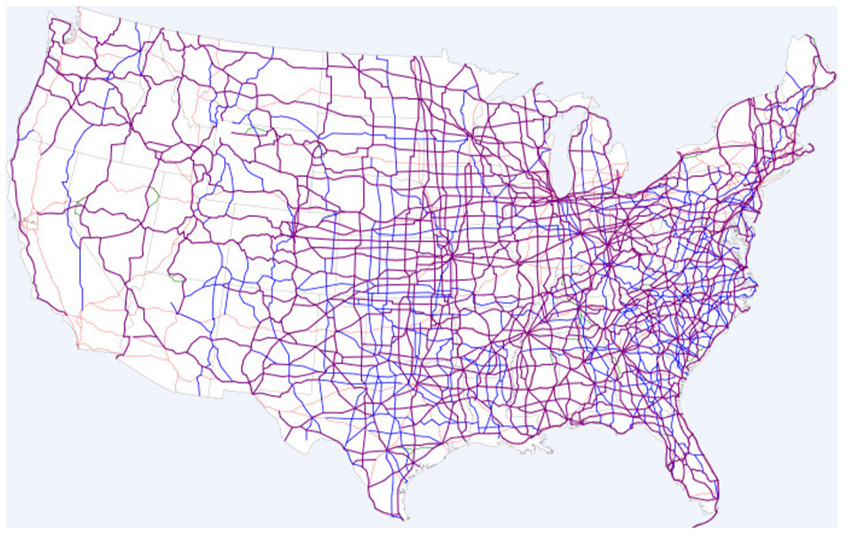
However, power is not the only benefit presented by solar road canopies. Heat management is another major aspect – especially within cities. As summer months continually increase in temperature through the encroaching impact of climate change,[28] cities are finding it ever-more challenging to deal with conditions hot enough to melt asphalt.[29] Placing solar canopies over roads would perform the same effect as placing solar canopies over parking lots – providing shade, keeping the surface below cool and reflecting heat upward instead of having it absorbed into the ground.
Another important aspect is the potential for stormwater management. Water management on roads is a major consideration of both safety[30] and environmental impact.[31] By integrating gutter systems into the solar canopies, such canopy arrays can divert water into nearby water management systems instead of letting it fall on road surfaces. In the context of drier climates with limited rainfall, this can present a highly attractive way to replenish municipal water supplies – especially if solar canopies are deployed over a larger scale. In the context of the National Aqueduct, this presents an especially effective method to deliver auxiliary water as well as store solar energy generated during the day – helping keep roads drier and safer during storms.
While solar road canopies would generate immense energy over distance, further benefits could include integration with road technology aids. Heating elements to keep panels clear of snow, municipal WiFi networks, wireless charging for electric vehicles, directional GPS guidance and auxiliary wireless guidance for autonomous vehicles are all examples in this respect.
As all canopies would require in abstract are metal pylons, a cross-lattice to install panels, wiring and plumbing, the overall deployment expenses and logistical challenges thereof are significantly limited – all the more since they would be installed on municipal property and thus spared of land costs.